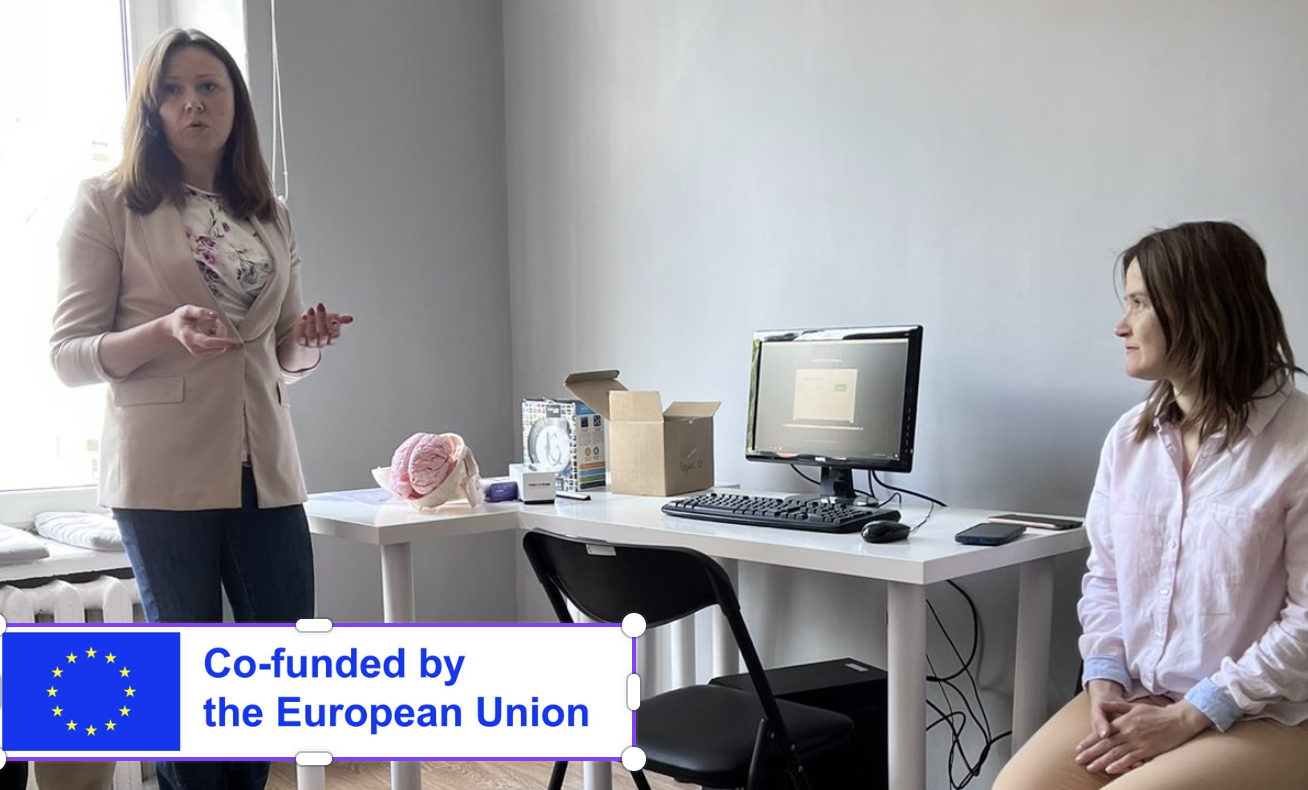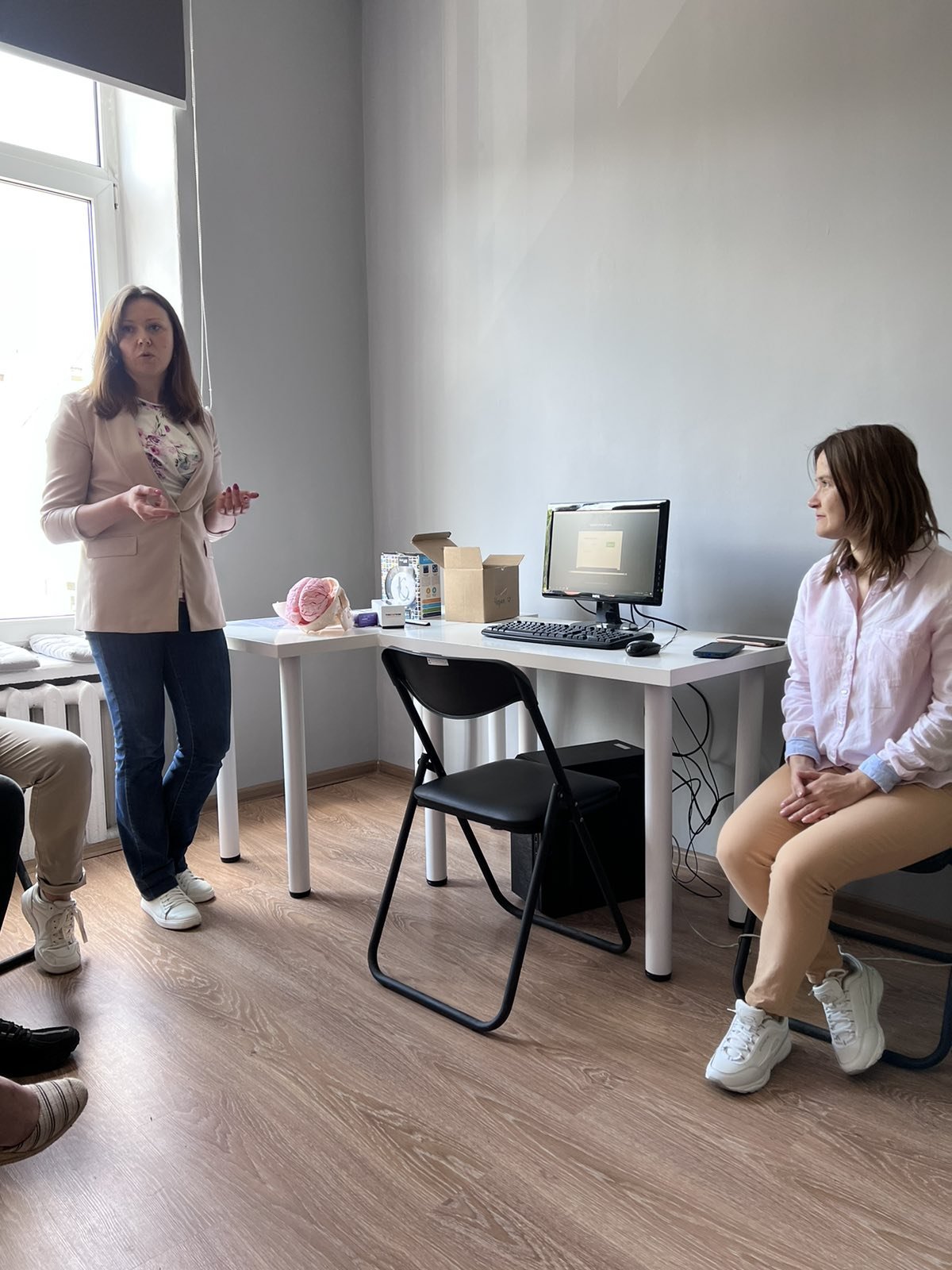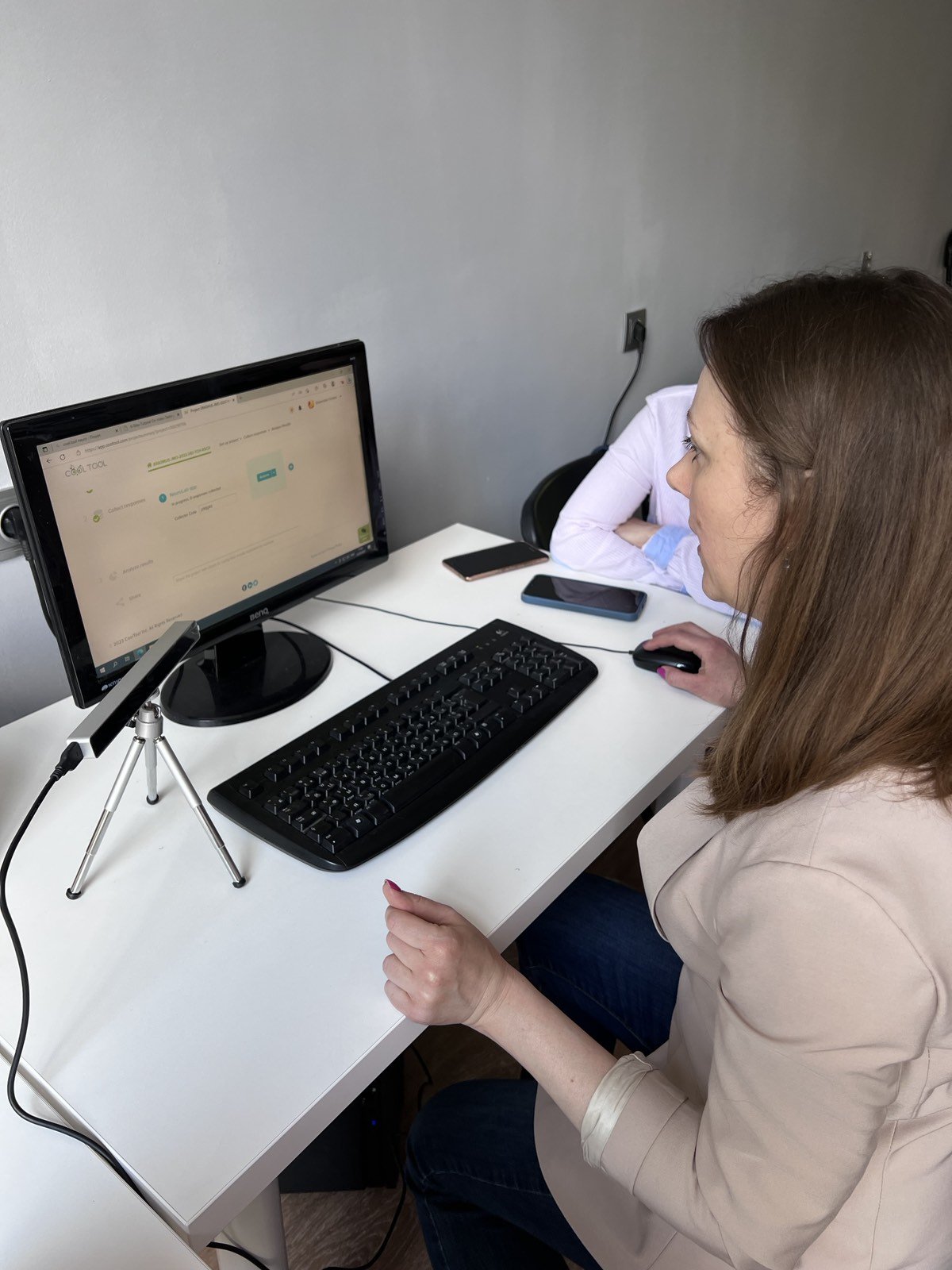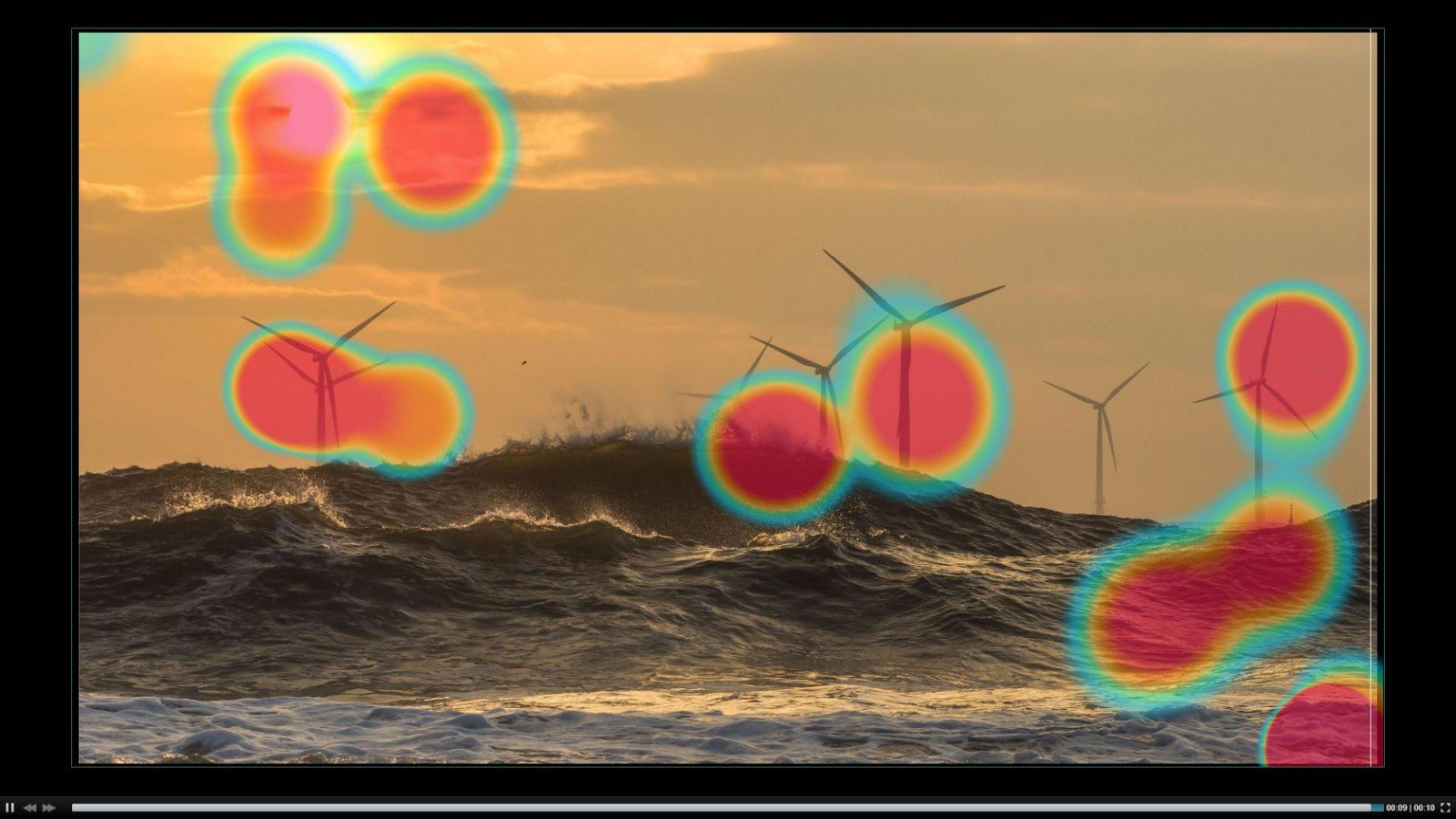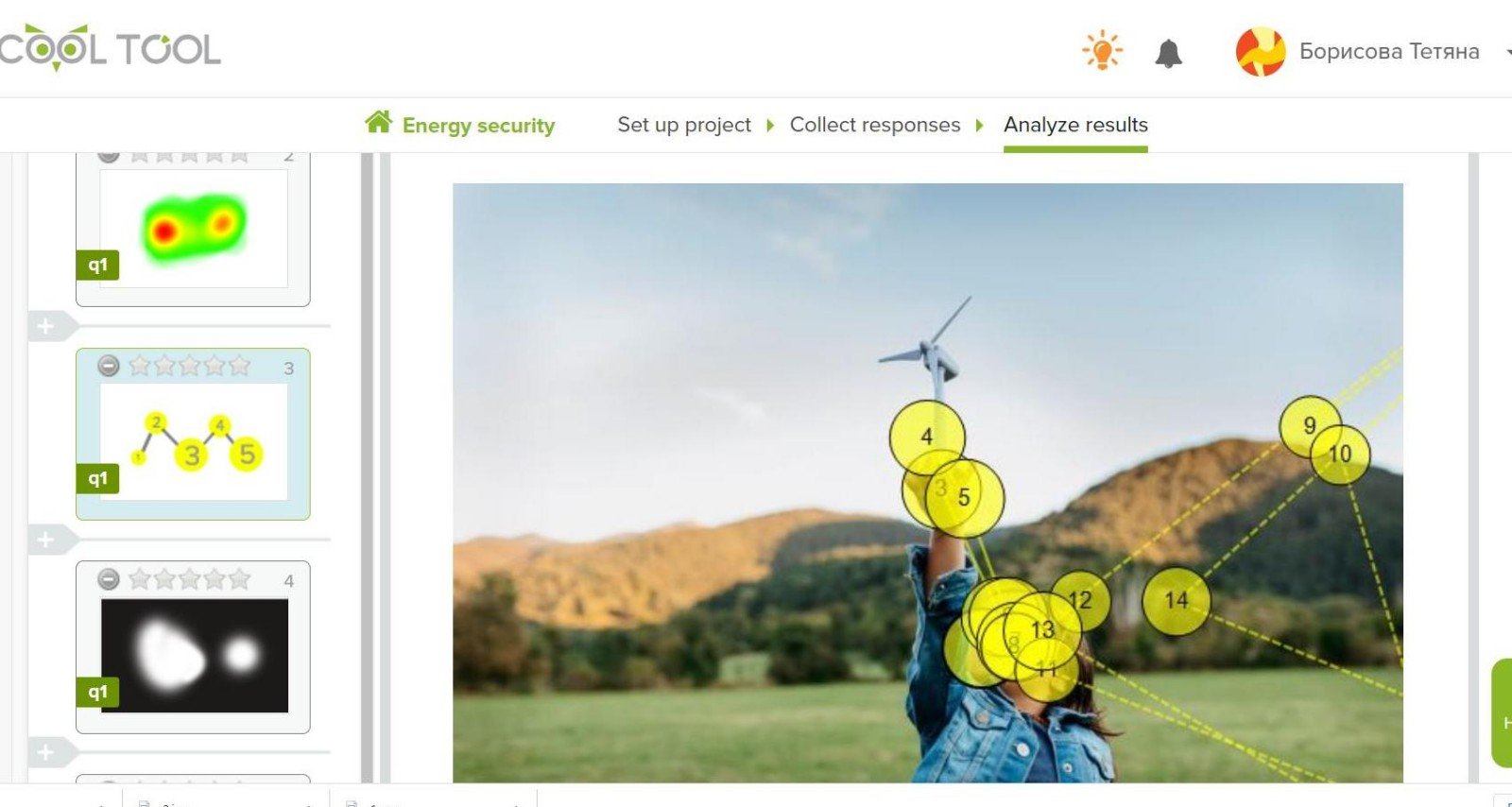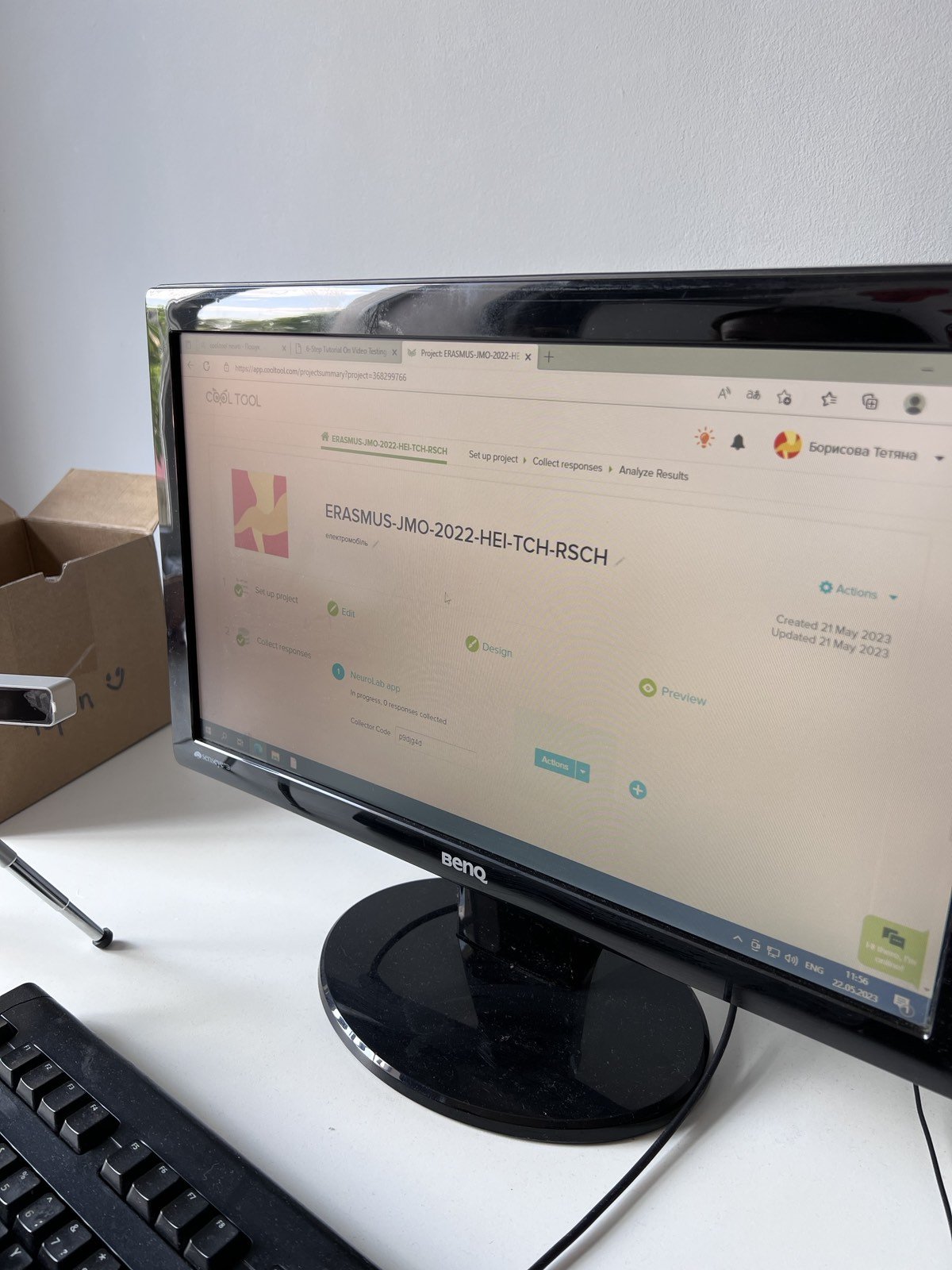A neuromarketing experiment was conducted at the Department of Marketing of the Western Ukrainian National University as part of the project 101085491 – EEACCCES – ERASMUS-JMO-2022-HEI-TCH-RSCH “European Experience of Adaptation to Climate Change: The Concept of Energy Security” under the Erasmus+ program (Jean Monnet). The study was aimed at determining the vulnerability of households to changes in the energy sector, investigating the nature of objections to the efficiency of electric vehicles, and the readiness of households to switch to renewable energy.
Marketing students together with Tetiana Borysova, Head of the Marketing Department of ZUNU, conducted a neuromarketing experiment using the CoolTool NeuroLab platform, Eye Tracking 101 device from Theeyetribe and EEG device from BrainWaves in the Neuromarketing and Advertising Laboratory of ZUNU.
The sample consisted of 20 people, including 11 women/girls and 9 men. The age structure is as follows: 17-25 years old – 7 respondents, 26-40 years old – 7 respondents, 40-50 years old – 6 people. The duration of the research is 10 seconds of photo material, 20 seconds of website.
The study tested images from websites and videos related to climate change and energy security. The goal was to identify the peculiarities of attention and emotional reaction of people of different ages and genders to photo content with different elements (technology, people, animals, nature).
The calibration was successful in 18 out of 20 cases, which allowed for a valid study.
The study included tracking the respondents’ eye movements on the screen where the material was shown, as well as recording their emotional reactions (positive, neutral, negative).
The study revealed the following:
– respondents of the younger age group (17-25 years old) paid 58% more attention to pastel colors and shades in the image, while respondents of other age groups paid more attention to bright saturated colors;
– The presence of a human face in the image increased attention by 112% across all groups of respondents; a child’s face attracted 43% more attention and 82% more positive emotions than an adult’s face at ;
– the presence of smooth shapes and symmetry in the image caused 21% more positive emotions and more attention than sharp and asymmetrical ones;
– the presence of dangerous natural phenomena in the image that looked threatening caused a negative reaction in all age groups, but on average held attention longer by 35% than calm images;
– differences in behavior by gender were recorded when viewing images with different elements; men, unlike women, were 20% more relaxed when viewing threatening or unpleasant content, and 33% longer to hold their attention.
This data can be useful for improving social advertising content, optimizing the placement of elements on an advertising medium or website, or evaluating the effectiveness of social advertising campaigns to increase household readiness for energy changes, switching to renewable energy sources, and using electric vehicles.
Funded by the European Union. However, the expressed views and opinions belong solely to the authors and do not necessarily reflect the views of the European Union or the European Education and Culture Executive Agency (EACEA). Neither the European Union nor the grantor can be held responsible for them.

